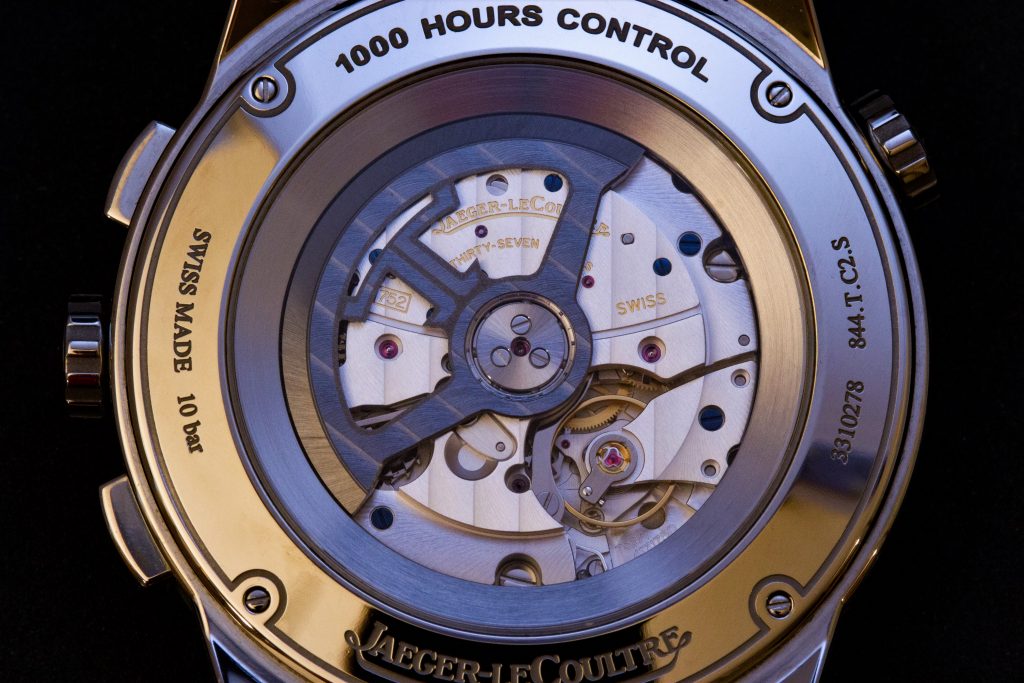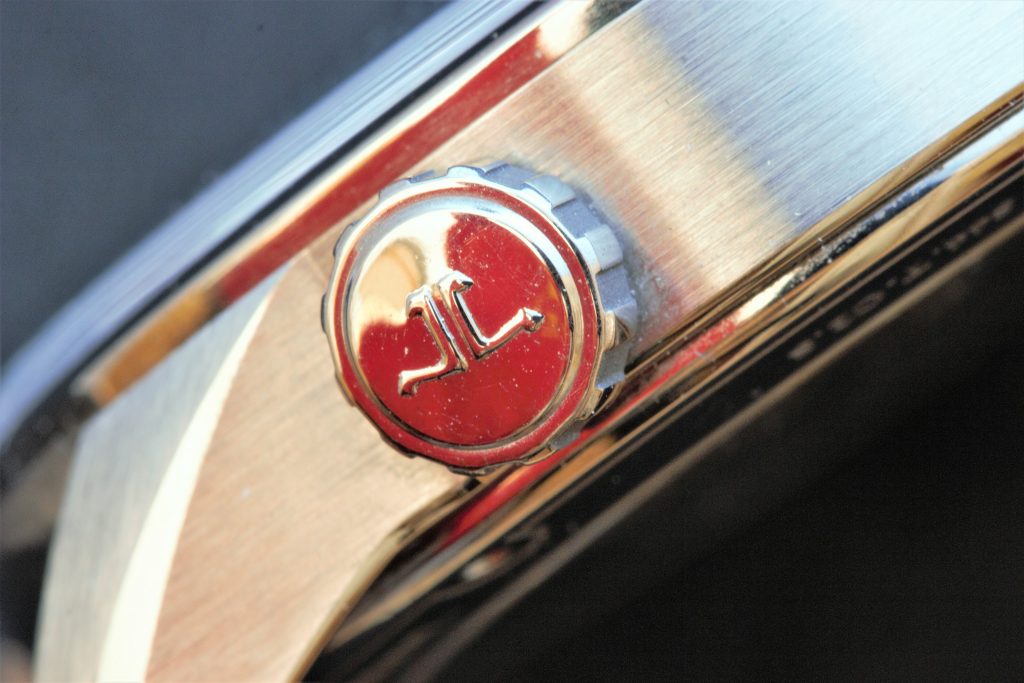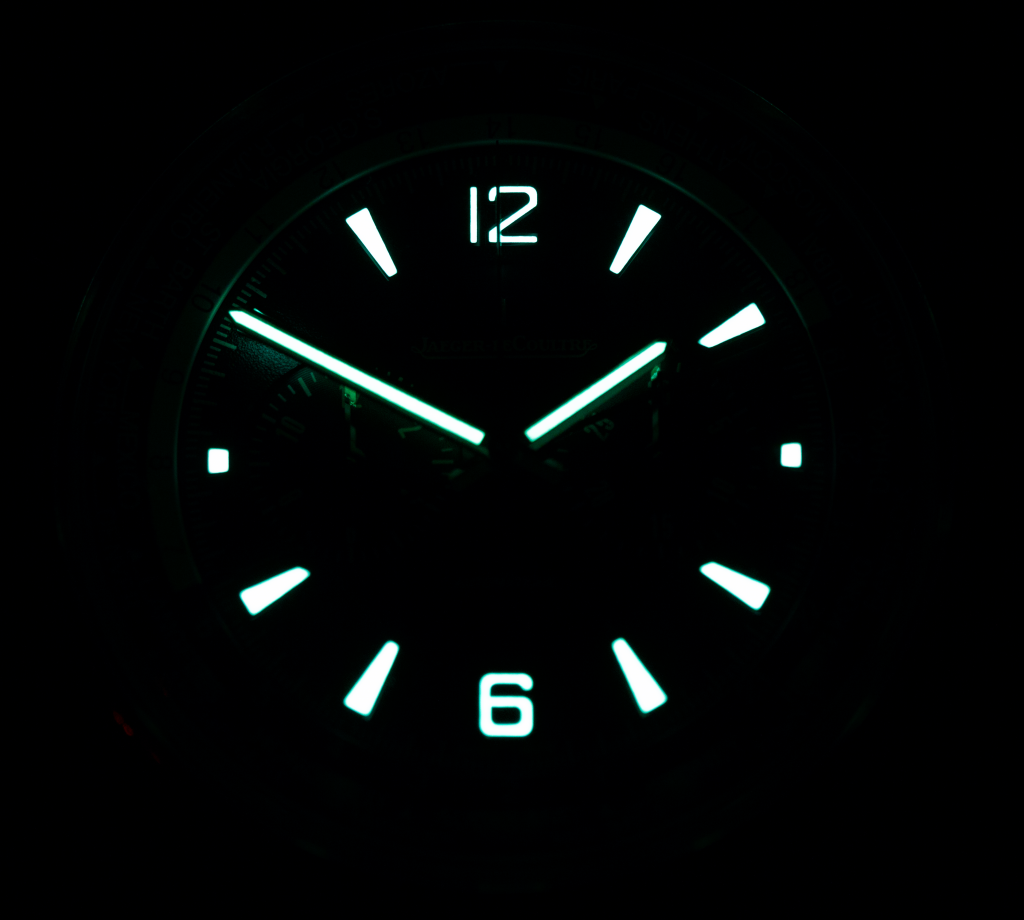For the past two weeks, I’ve had on my wrist a special watch from the likes of Jaeger-LeCoultre, one of the most prestigious brands out there and certainly a favourite among collectors. Back in SIHH of this year, Jaeger announced it was re-introducing an old variant of a watch as a new model line. The Polaris, which started life as a variant of the Memovox, was unveiled earlier this year to the applaud of fans all over the world. It comes in several different flavours from the standard twin crown three-handed setup (or there’s a three-handed date), the Polaris Chronograph, the world time Geographic and the legendary Memovox with its chiming alarm setup. Then there’s the one I’ve had, the range-topper (as the dealers described it), the Polaris Chronograph World Time.
The first thing to say about the Polaris Chronograph WT is that the mass of the watch belies its size. It may be 44mm in diameter and 12.5mm thick, but because it’s constructed from titanium and has a very wide brown leather strap, it’s surefooted and comfortable on the wrist. It’s a well-proportioned piece, everything there seems to be in place and has a functionality to it, it’s not just big for the sake of big, even the thick lugs are right at home here. The watch I had made good use of a blue dial, it could be dressed up easily, which is something I did throughout my two weeks, or it can be worn very casually with a polo shirt and jeans. As an all-rounder, it’s a great effort this.
Though, having said all that, you might find yourself wishing for a situation where you could make good use of the complications that Jaeger-LeCoultre so lovingly put inside the watch. Indeed, other than timing how long it takes to brown my toast in the grill out of curiosity, I couldn’t find an extensive use for the chronograph, and I didn’t use the world time at all. Now, that’s not entirely the watch’s fault, it does very much depend on the person wearing the watch to decide what they want to use. Given that it’s water resistant to 100m (though, neither of the crowns screw down) and presented on a leather strap we can assume that it’s not a particularly sporty watch, even if the case is made of titanium. It seems to be more of a watch which could take a beating but is better left on the sidelines if things get really crazy. I guess you could call this a crossover watch, it’s elegant and complicated like a dress watch, but the case is titanium, and the movement seems quite rugged. It’s a hard one to define.
Previously I mentioned the movement, the in-house calibre 752A is made up of 274 parts and boasts a 65-hour power reserve which is what I got out of it. Inside the movement, there are the parts for the world time as well as a column wheel chronograph, though I do believe it is a modular chronograph and there’s no mention of a vertical clutch in there either. Though, it does help keep the costs down a bit. Another way that happens is by machine finishing the movement which is what appears to have happened here. The movement does look good, not great or amazing, even for JLC, but it is up to the job and does look the part, I think at this price point it’s not a bad call. What is perhaps a bad call is the sizing of the movement.
Now, I am aware of budgets and restrictions, and so forth, so I hope I don’t sound completely unaware when I state that this 44mm watch has a tiny looking movement which causes an imbalance in proportions when viewed from the back. The only Polaris with a similar movement is the 751H in the Polaris Chronograph, and the last time a 752 calibre was used was in the AMVOX5 which had the same setup like this. Granted, it’s a little better than the ultra-tiny movements found inside the large Audemars Piguet Royal Oak Offshore watches, but those make up for the size with finer decoration than this. If you noticed, they did a slight ‘bowl’ effect to make the movement seem larger than it is, but to be honest, other brands like Chopard do a better job of it.
Further, the rotor on this watch is very noisy, something which I’ve noticed on other automatic JLC watches. This noise appears to be coming from the automatic rotor’s bearings, which are made of ceramic balls. While this creates a sealed-for-life unit, any microscopic specs of dust that happen to get in there will cause a grating sound when the ceramic balls move against each other. Although I’ve had some discussion with other enthusiasts about this, with one theorising it was the design of the barrel ratchet that caused this, to me it sounds like a rattle.f
While we are talking about things I don’t necessarily like with this watch, do you remember a few articles back I spoke about the importance of getting subtle details right such as the matching of metals on the case and clasp? On this piece, the case is solid titanium that’s both brushed and polished, but the all polished butterfly (sometimes called double-deployant) clasp on this piece is machined from stainless steel. It doesn’t seem like much, and it’s certainly not as much of a faux pas as a steel clasp on a gold watch, but I’d love to have a titanium clasp even if it pushes that price up.
That’s all I have to say that I don’t like about the watch. Some of my favourite parts of it include the operation of all the complications. It doesn’t matter whether you turn the city ring, depress the chronograph pusher or even just wind the watch through its non-screw down crown, everything feels precise. The pushers for the chronograph are especially excellent, there is only just enough resistance to prevent accidental activation, it’s right on the cusp of too much. I should also point out that the chronograph is not a flyback type, that makes little to no difference to me anyway. Though, when I did use it, the bi-compax layout using two subregisters made for straightforward reading at a glance, the silvery hands contrast with the blue dial well.
There is no running seconds on this watch, so there is no need for a red hand on a subdial to throw out the perfect balancing of the dial. There is also a hand which stretches from 06:30 to 18:30 on the dial to make it easier to read the 24 hour time. The SuperLumiNova application is nice and reserved, as you’ll see in the photograph, the large 12 and 6 numerals make it easy to understand at night time and the hands are big enough to see clearly at a glance. I should mention that I noticed the lume doesn’t hold its charge as long as you’d find on a diving watch, but as this is not meant for deep sea excursions, this is excusable.
The dial comes in a few different colours, my one was the radiant blue you see in the pictures, it’s visually very pleasing to the eye, and under a macro lens you’re able to notice that the section of the dial which seems grainy and textured does actually reflect the shape of the hands very well. Inside that ring is a sunburst effect which contrasts well with the graining, and also provides an excellent backdrop for the applied JL logo. Of the three colours, this one is my favourite. I’d like to see it paired with the steel bracelet or even the supple rubber strap you get on the Polaris Memovox. To aid in this styling scenario, Jaeger has equipped this watch with an elegant quick-change system for the strap. It was a little finicky at first, but sliding the strap in and out soon became an easy task.
The watch you see before you, costs $14,500 on the calf leather strap as I had it. That puts it right near the Glashütte Original Senator Chronograph Panorama Date (if you put the JLC on an alligator strap for an extra $100 they become the same price at retail). That watch ditches the world time in favour of a more intricate chronograph system and arguably a nicer finish. But, if you wanted to stay with the chronograph world time layout, you’re in the ballpark of the Patek Philippe 5930G-001 which is massively more expensive. If you look pre-owned, you can find Girard Perregaux’s excellent WW.TC watch, a couple of different Breitlings and even Jager’s previous sports world time chronograph, the Master Compressor Extreme World Chronograph. This JLC is arguably more sophisticated and elegant than the last two, and on the same level as the Girard Perregaux. That leaves us with the ultra expensive Patek Philippe, which we can eliminate solely on a pricing basis.
There aren’t that many watches which combine the world time and the chronograph, and with its elegant looks and easygoing nature on the wrist, the new Jaeger-LeCoultre Polaris Chronograph WT could well be the pick of the bunch. Visit Jaeger-LeCoultre here.













